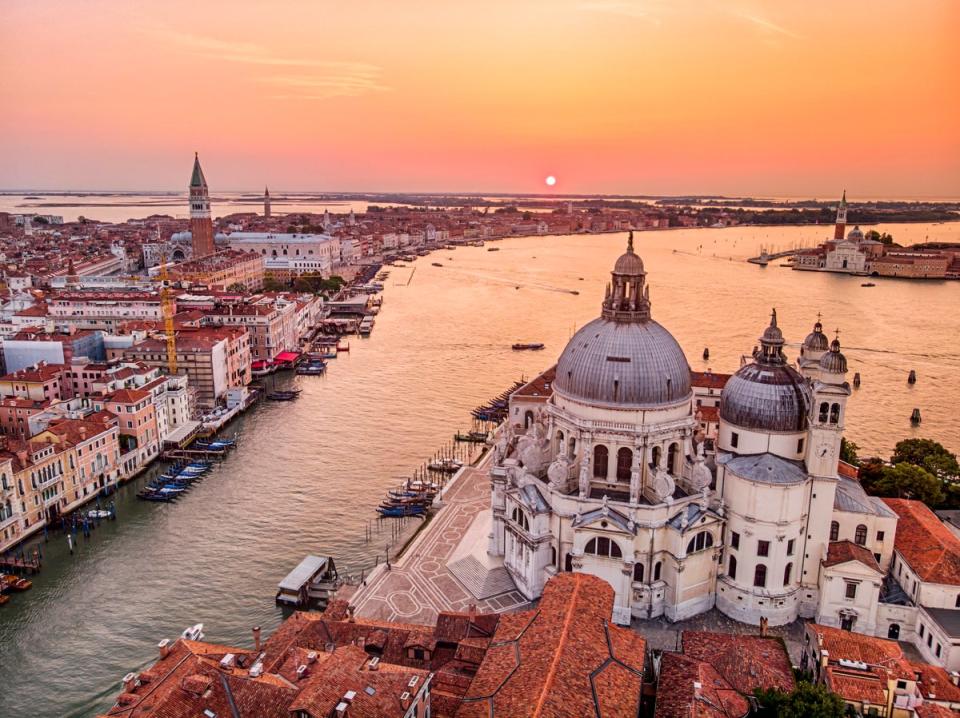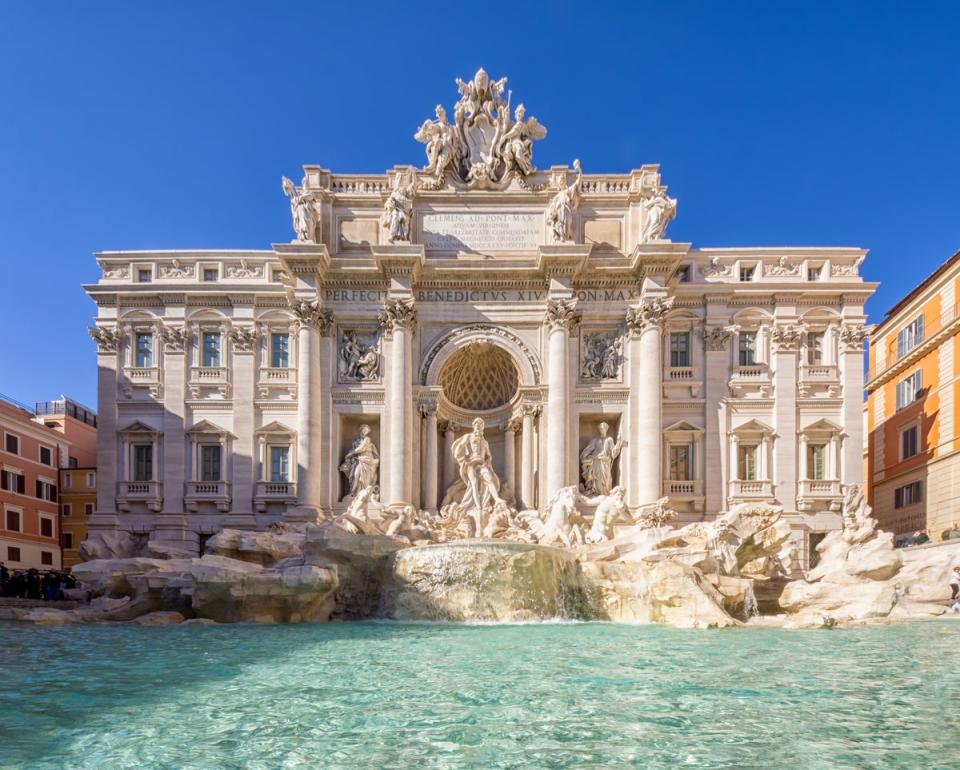What are the rules for travelling to Italy this summer?

Italy has been added to the “amber” list of countries as part of the reopening of international travel from 17 May, it was confirmed on Friday.
Transport secretary Grant Shapps announced that the country would not make the list of ‘safe’ green countries, stating that the removal of international travel restrictions on May 17 was “necessarily cautious”, adding: “We must make sure the countries we reconnect with are safe.”
The lists are expected to be reviewed and updated every three weeks.
Art, food, fashion and some of Europe’s most picturesque coastlines have led to Italy establishing a solid place for itself in the hearts of travellers around the world.
While Italy’s Prime Minister Mario Draghi said on Tuesday that the country is “ready to welcome back the world”, there’s no guarantee that British travellers will be able to escape quarantine measures upon their return to the UK.
Foreign travel will reopen this summer under a traffic light system, with countries split into three categories: green, amber or red, depending on their level of risk in relation to Covid-19.
Destinations will make it onto the green list based on their case numbers, vaccination rates, and prevalence of any virus variants of concern. Visitors to these countries will not be required to quarantine upon their return to the UK unless they test positive for coronavirus.
So, is an Italian escape likely this summer? Here’s everything you need to know.
Will British holidaymakers be allowed to travel to Italy this summer?

Italy is poised to welcome back tourists from mid-May.
From 16 May, UK tourists who have had both doses of the coronavirus vaccine will not face any restrictions and other arrivals will be welcome provided that they can produce a negative test taken 48 hours before arrival. Unlike other European countries, Italy is accepting antigen tests as well as PCR tests. In addition, travellers who have previously tested positive for Covid-19 will be exempt from any testing requirements if they present a certificate of prior Covid-19 infection upon arrival.
Prime Minister Mario Draghi said earlier this week that Italy would have its own “national green pass”, allowing people to move freely between Italian regions, before the EU’s planned Digital Green Certificate was up and running.
“Waiting for the European Certificate ... we have a national green pass that will enable people to move from region to region and will be operational by mid-May, so let us not wait until mid-June for the EU pass,” he told a meeting of tourism ministers, reported Reuters.
“In mid-May tourists can have the Italian pass ... so the time has come to book your holidays in Italy.”
The EU’s proposed certificate will be its version of a so-called “vaccine passport”, enabling easier travel between member states by having one universally acknowledged digital pass that can store a person’s vaccine status or Covid test results.
However, it remains illegal to travel abroad from the UK for holidays, although this is expected to change in England from 17 May.
What will travel to an amber list country entail?

Holidaymakers travelling home from a destination on the amber list will need to take a pre-departure test – which can be a lateral flow or rapid antigen test, as well as a PCR test – with proof of a negative result.
Upon arrival to the UK from an amber list country, travellers must self-isolate at home for 10 days, plus pay to take two PCR tests: one on day two and one on day eight.
Will I need to have been vaccinated to visit Italy?
No. Tourists travelling to Italy are expected to provide either proof of full vaccination, a negative Covid test taken within 48 hours of their arrival, or proof of prior Covid infection to be allowed into the country.
Travellers must download and complete a self-declaration form from the Ministry of Foreign Affairs before travel.
The Foreign, Commonwealth and Development Office (FCDO) adds: “Everyone arriving in Italy must also call the Covid-19 helpline for the region you are travelling within 48 hours, to inform them of your visit.”
Do I need to isolate upon arrival in Italy?

Currently, yes. Visitors to Italy must self-isolate for five days upon arrival and undertake a molecular or antigenic test at the end of the five-day self-isolation period, regardless of vaccination status or an earlier negative Covid test.
However, from 16 May these restrictions will be lifted, provided travellers produce proof of vaccination, prior infection or a negative test.
Holidaymakers must also take a Covid test 72 hours before returning to the UK. Failing to do so could result in being denied boarding or risking a fine of up to £500 on arrival back to the UK.
What rules and restrictions are currently in place in Italy?

At present, a nightly curfew remains in place in all regions from 10pm to 5am that prohibits people leaving their place of residence during this time apart from emergency, work or health reasons.
The Italian Government recommends that people avoid public transport – which is currently operating at 50 per cent capacity – except for essential purposes.
The use of face masks is mandatory in all public spaces, whether indoors or outdoors, and social distancing of one metre must be observed.
All regions have been designated “yellow”, “orange” or “red” depending on their Covid case status, with restrictive measures differing in each area.
In yellow regions, bars and restaurants with outdoor seating reopened until 10pm on 26 April, with indoor table service expected to resume from 1 June until 6pm only.
Cinemas, theatres and concert venues have reopened with limited capacity, alongside museums, which must be pre-booked at least one day in advance.
Open-air swimming pools are set to reopen from 15 May, with spas and theme parks set to follow on 1 June.
In orange and red regions, movement is only permitted for cases of “absolute necessity”, such as work or health.
Bars and restaurants remain closed, and only shops selling essential items are open.
While much of Italy is currently in the yellow zone, Puglia, Sardinia, Sicily, Calabria and Basilicata remain in the orange zone. In the far north, only Valle D’Aosta remains in the red zone.
However, the national green pass proposed by the Italian Government may permit holidaymakers arriving in Italy to move freely between regions.
What is the current Covid-19 status in Italy?
Throughout the pandemic, Italy has emerged as one of Europe’s major Covid hotspots. The country is slowly emerging from a two-month lockdown following a third wave which saw rising transmission rates and overwhelmed hospitals.
According to the World Health Organisation, there have been 122,005 deaths from coronavirus recorded in Italy to date.
Over 22 million vaccine doses have been administered, equating to around 18 per cent of the country’s population. Cases are continuing to fall throughout Italy.

 Yahoo News
Yahoo News 
